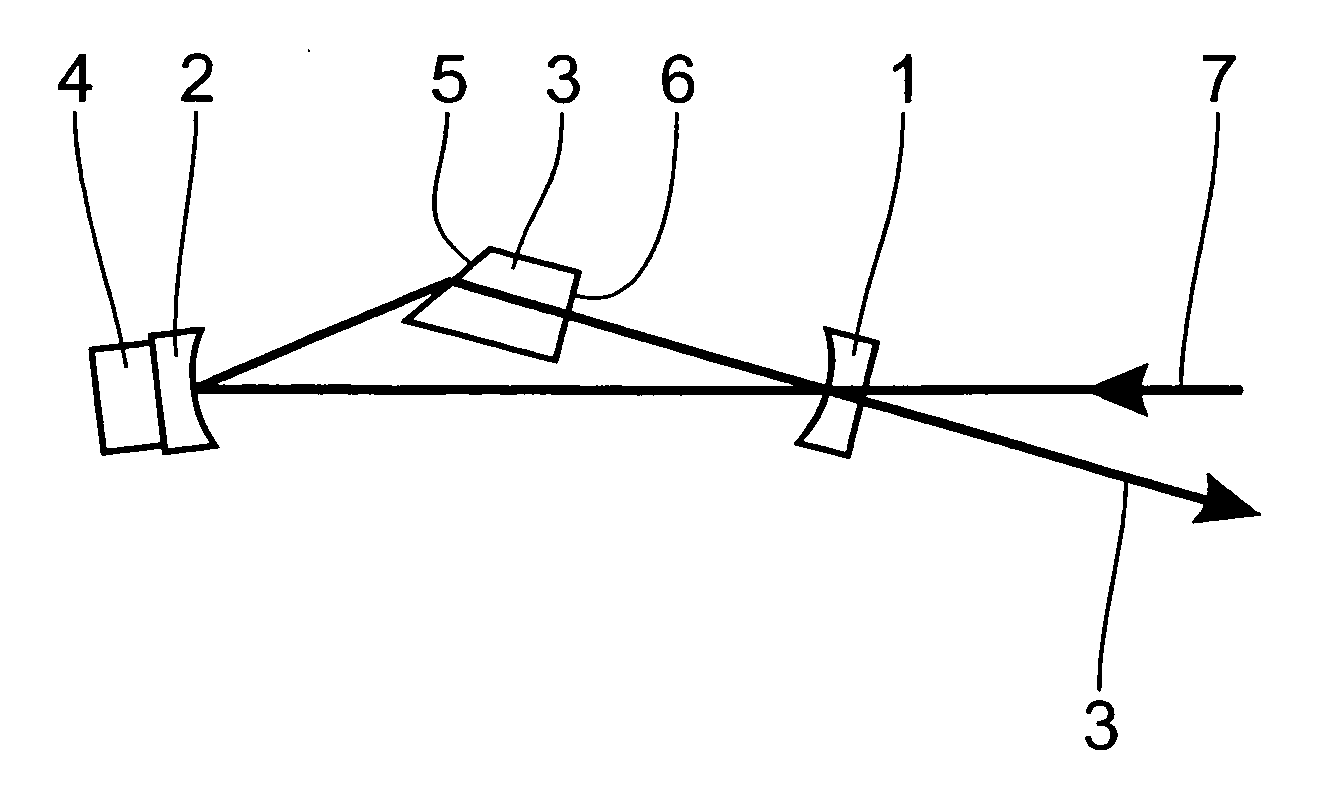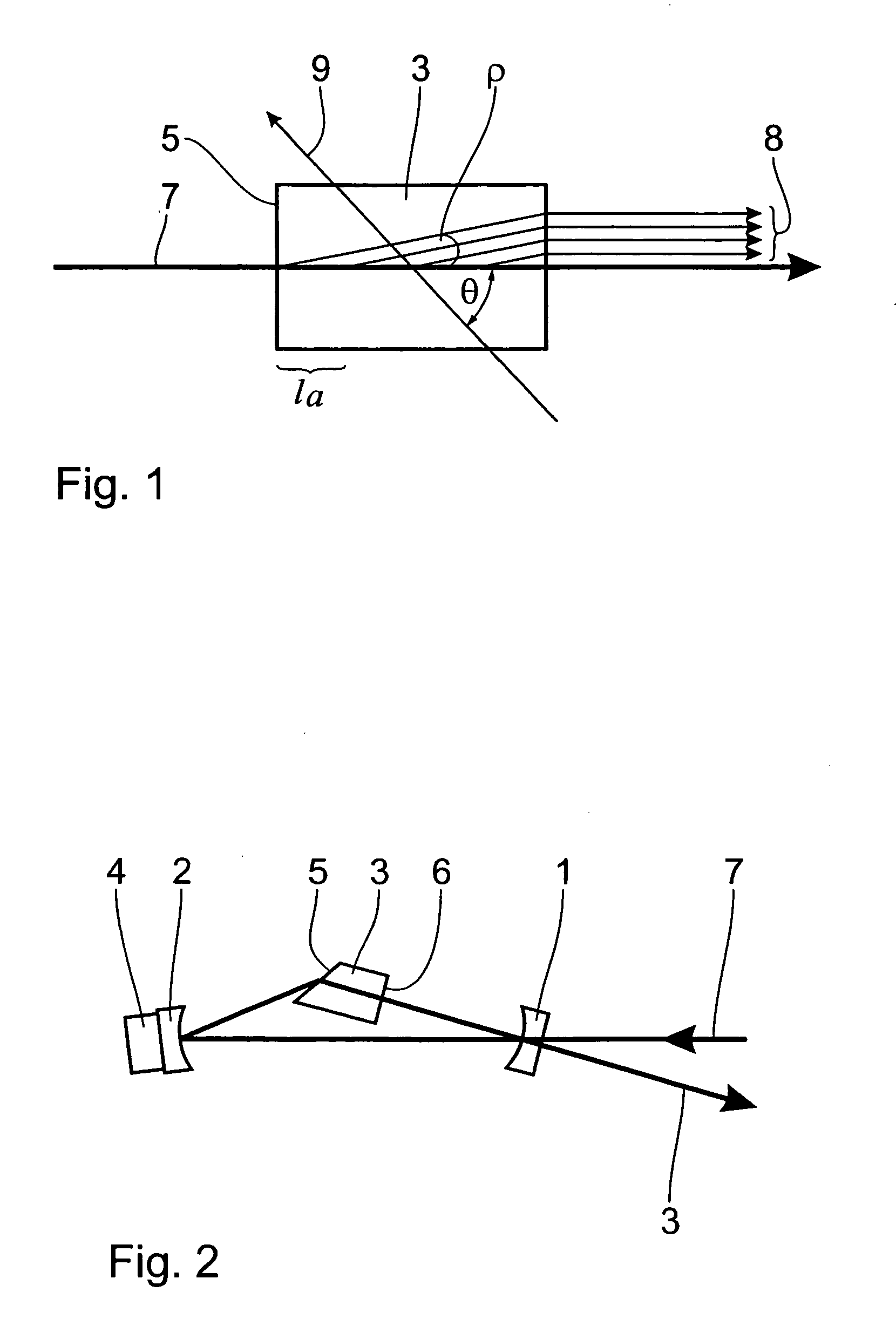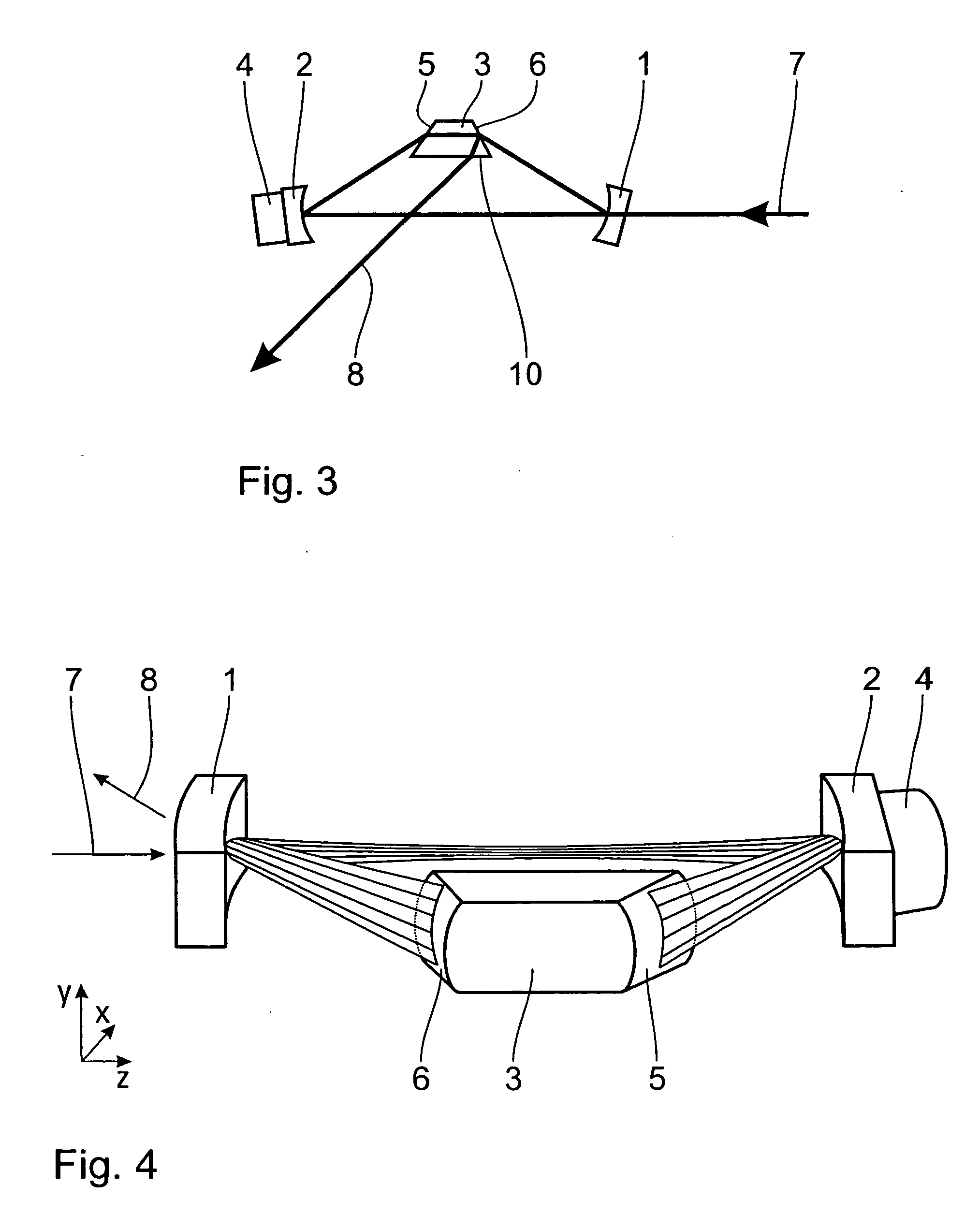Optical resonant frequency converter
a frequency converter and optical resonant technology, applied in optics, laser details, instruments, etc., can solve the problems of reducing the conversion efficiency level, reducing the conversion efficiency, and inefficient non-resonant conversion for practical use, etc., and achieve the conversion efficiency of frequency converters in accordance with the state of the art. unsatisfactory low
- Summary
- Abstract
- Description
- Claims
- Application Information
AI Technical Summary
Problems solved by technology
Method used
Image
Examples
Embodiment Construction
[0057] In the embodiment of FIG. 2 the mirror 1 is used both as the coupling-in mirror for the fundamental wave 7 and also as the coupling-out mirror for the converted beam 8. The mirror 1 is therefore provided with a coating which at the fundamental wavelength has a reflectivity R which is as close as possible to the optimum value R=1-V, wherein V denotes the resonator losses. At the wavelength of the converted beam the coating should have a level of transmission which is as high possible. The resonator mirror 2 is provided with a coating which is as highly reflecting as possible for the fundamental wavelength and is fixed on a piezo element 4 so that, by applying an electrical voltage, the mirror can be moved and thereby the resonator can be tuned to the frequency of the fundamental wave. As the mirror 2 is not used for coupling in the fundamental wave nor for coupling out the converted beam, both the mirror and also the piezo element can be of very small dimensions without an ape...
PUM
 Login to view more
Login to view more Abstract
Description
Claims
Application Information
 Login to view more
Login to view more - R&D Engineer
- R&D Manager
- IP Professional
- Industry Leading Data Capabilities
- Powerful AI technology
- Patent DNA Extraction
Browse by: Latest US Patents, China's latest patents, Technical Efficacy Thesaurus, Application Domain, Technology Topic.
© 2024 PatSnap. All rights reserved.Legal|Privacy policy|Modern Slavery Act Transparency Statement|Sitemap



